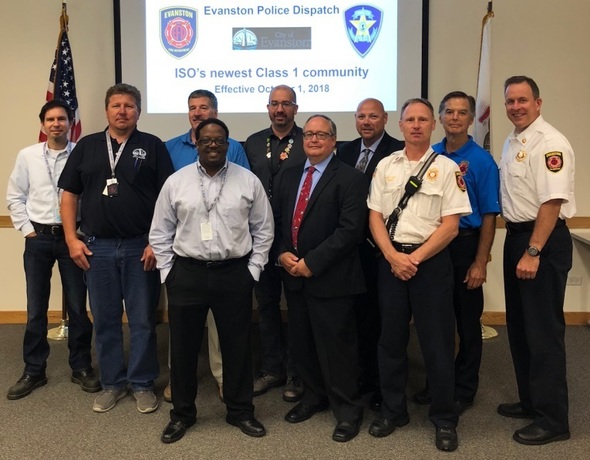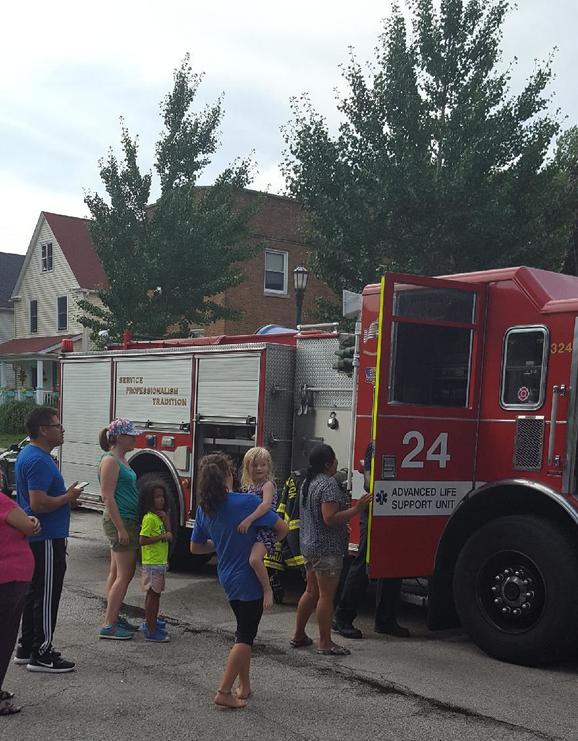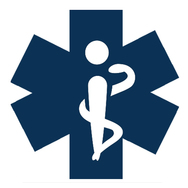 (Front row, from left: Chief Darrell King, Mike Ramirez of ISO, Bill Muno. Back row, from left: Paul Moyano, Tim Bartus, Dave Stoneback, Chris Voss, Randy Downs of ISO, Mike Whalen, Brian Scott. Not pictured: Communications Coordinator Perry Polinski)
This month I am very
proud to report that the Evanston Fire Department has achieved the prestigious
Class 1 rating for fire protection services from the Insurance
Services Office, Inc. (ISO). ISO’s Public Protection Classification (PPC)
review is conducted by expert ISO staff on a five-year cycle, and includes evaluating
our operations, water supply, emergency communications and community risk
reduction efforts.
ISO has evaluated the
fire protection services of more than 47,000 fire departments across the
nation. Only 305 fire departments have achieved a Class 1 designation, placing
the Evanston Fire Department in the top 1 percent of all fire departments in
the country.
This prestigious
designation validates what we already know: The Evanston Fire Department is one
of the best in the nation and it reflects the exceptional fire and rescue services
we provide to our great city each and every day as well as the exemplary work
of our Public Works Agency Water Production Bureau, and the Evanston Police
Department Communications Bureau.
This rating may also
help secure lower fire insurance premiums for Evanston residents and business
owners. In general, the price of insurance in a community with a good PPC is
lower than in a community with a poor PPC, assuming all other factors are
equal. Please check with your home or business insurance provider for potential
premium cost savings. Our new rating begins October 1st.
Please have a wonderful and safe rest of the summer
and enjoy this month’s Roll Call. If you
have questions, please feel free to contact me at (847) 866-5924 or
bscott@cityofevanston.org.
Stay Safe!
Brian R. Scott
Fire Chief
 Neighbors line up for a seat on Engine 24 at the Greenwood and Dewey block party
Below is a breakdown of recent emergency responses.

542 Incidents in July
|
Fire Calls

304 Incidents in July
|
Response Times

EFD average response times for July:
3 min 11 sec from dispatch to emergency
NFPA average: 4 min or less
|
Operations
 In the Emergency Medical World, being a paramedic can be
tricky when loved ones are involved. It
is a very scary time for the family and friends when they have to call 911,
never mind it being for a cardiac arrest. Emotions run hot and the unknown is scary. When Evanston Fire Department paramedics
arrive on the scene of a cardiac arrest, it is in the patient’s best interest
that we start our care immediately on the scene. Sometimes the families request that we get in
the ambulance right away and get to the hospital quicker, but in reality, the
paramedics need to stay on scene and start Advanced Life Support care
immediately. Studies and statistics have
shown that the quicker one can get blood circulating throughout the body and to
the brain, the better the chances of survival are. Good quality CPR is vital. It cannot be stressed enough that the first and
most significant line of defense is high-quality compressions. Our protocol as paramedics for a cardiac
arrest is that of a doctor in a hospital. Paramedics
and doctors alike use the same medicine and do the same CPR. As soon as we are able to get a heart rhythm
and pulse back on the patient, the patient can be transported to the hospital
for continued cardiac care.
As a community, it is imperative to know that if you see
someone suddenly drop, go and check for a pulse and breath sounds. If there are none, compressions should be the
first thing you do. Advise someone to
call 911 and the start compressions. The
body needs to get blood circulating as quickly as possible. The more time compressing the chest and
without delay increases the chances of survivability. Compressions and electricity have been proven
to be what saves lives. Since June, Evanston has had 11 cardiac arrests. The survival rate has increased due to the implementation of
compressions first and immediately.
Everyone should be comfortable with doing CPR, for yourself and for your
loved ones as well. It is never too late
to learn. If you are interested in learning
CPR for yourself or if you know of someone interested, the Evanston Fire
Department offers community based CPR classes. You can find information on these classes on the City of Evanston
website, www.cityofevanston.org
. We would love to see you there.
Fire Prevention Bureau
Preventing
Spontaneous Combustion of Oil-Soaked Rags
The most common
type of spontaneous combustion fires are those caused by improperly disposed
of oil- and stain-soaked rags. Examples of these products are oil-based paints
and stains, teak and linseed oils, varnishes and polyurethane, paint thinners, etc.
Spontaneous combustion of oily rags occurs when rag or cloth is slowly heated to
its ignition point through oxidation. A substance will begin to release heat as it oxidizes.
If this heat has no way to escape, like in a pile, the temperature will raise to a
level high enough to ignite the oil and ignite the rag or cloth. The fire from this can
spread quickly to other combustibles and cause great damage to your home or property.
Prevention of
spontaneous combustion fires begins with good housekeeping. A clean work area can
prevent a fire from spreading and getting bigger by not allowing the fire fuel to
burn. Also understanding the potential for self-heating of rags soiled with oils such as
linseed oil and turpentine is a key step in eliminating these preventable
fires.
To properly and
safely dispose of oily rags, Evanston Fire Department recommends the following steps:
- Use
a container with a tight fitting lid. A metal can is preferable but a plastic
can or zip lock bag can work if nothing else is available.
- Place
soiled and used rags inside and then fill the rest of the way with water, seal the
top and do not open it. This will prevent the oils from oxidizing, and thus keep the rags from heating up and igniting.
|